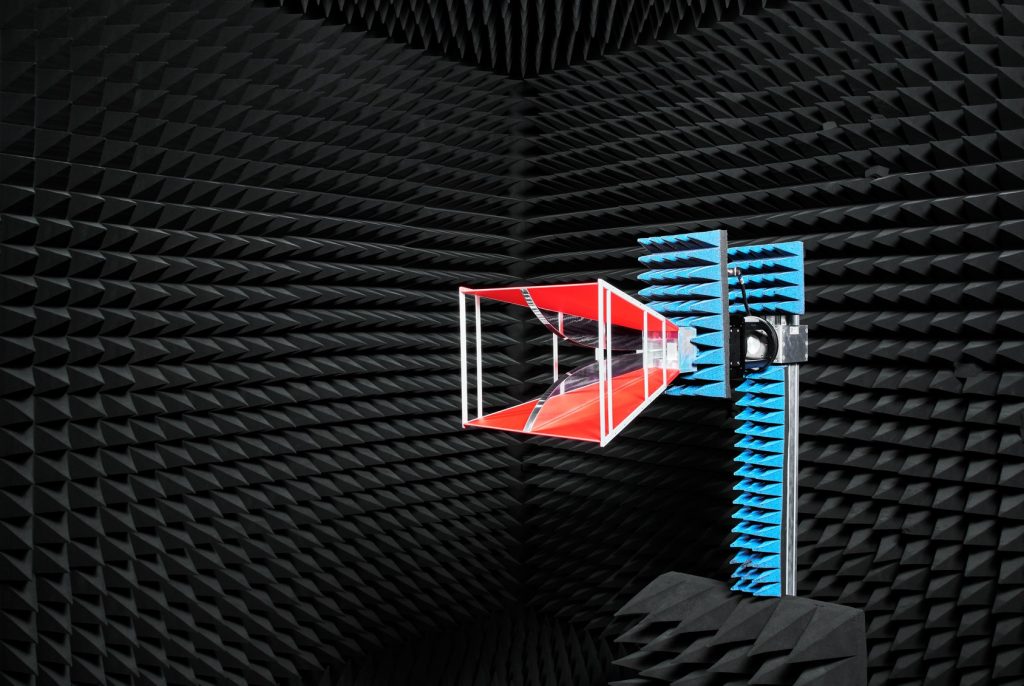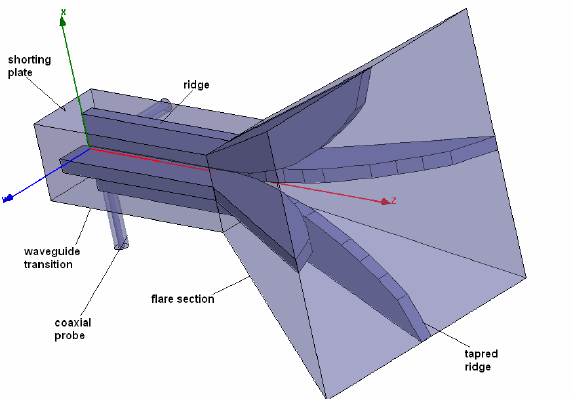An antenna that uses a metal waveguide that flares outward in the shape of a horn to focus radio waves into a beam is known as a horn antenna or a microwave horn. At UHF and microwave frequencies above 300 MHz, horns are frequently used as antennas. Their benefits include broad bandwidth, low standing wave ratio (SWR), moderate directivity, and ease of fabrication and tuning.
To support the numerous RF, microwave, and millimeter-wave applications, there are many different types of antennas. Horn antennas, which have been in use since the early 1900s, are a particularly popular type of antenna for microwave and millimeter-wave systems. In essence, horn antennas are rectangular or circular waveguides with a smaller waveguide or coaxial port on one end. Low voltage standing wave ratio (VSWR) horn antennas operate across a very wide bandwidth (10:1 and even 20:1 horn antennas are feasible), have a modest directivity, and are reasonably easy to make. Horn antennas are a good choice for performance testing since their gain and SWR are typically flat over the bandwidth.
Common applications for horn antennas include feed horns for large antenna structures like parabolic antennas, directive antennas for radar, microwave radiometers, and calibration and testing situations for other antennas. Horn antennas are also extensively employed in channel sounders and other field testing equipment, and they are a popular choice for proof of concept prototypes and future 5G testing platforms. To meet the needs of these numerous applications, horn antennas come in a variety of forms and constructions.
- Pyramidal Horn Antenna
It is a common type of horn antenna that resembles a rectangle or square pyramidal structure ending in a waveguide port, which is commonly a rectangular waveguide
- Sectoral Horn Antenna
These horn antennas can be recognised by the alignment of one side of the horn antenna structure with a wall of the terminating waveguide port and the flared out design of the other sides. A sectoral horn antenna may be either an E-plane or an H-plane horn antenna, depending on how the flat and flared sides are arranged.
- Conical Horn Antenna
A conical horn antenna is frequently a circular or elliptical cone ended in a circular or elliptical waveguide rather than a rectangular pyramid construction, such as a pyramidal horn antenna. Despite the fact that certain conical-horn antennas end in rectangular waveguides,.
- Scalar Horn Antenna or Exponential Horn Antenna
An exponential horn antenna is a variation of a pyramidal, sectoral, or conical horn antenna with an exponentially tapering side that forms a curved surface from the antenna aperture to the waveguide termination. With this construction technique, internal reflections are reduced to a minimum, and electrical performance and impedance are stable over a very broad frequency.
- Corrugated Horn Antenna
A corrugated horn antenna features sidewalls that are transverse to the antenna’s axis and have slots or grooves on the inside surface of the horn. Very low side lobes and cross-polarization levels over the bandwidth are made possible by these design elements, which are electrically modest in relation to the operating wavelength. These antennas are frequently employed in radio telescope and satellite applications.
- Gain Horn Antenna
Horn antennas with strong and stable gain over a wide bandwidth are known as gain horn antennas. These horn antennas are frequently used for radar, satellite and space applications, as well as for testing other antennas.
- Feed Horn Antenna
An antenna used to transmit and receive signals from RF and microwave circuits to the parabolic reflector frequently seen in satellite dishes and radio telescopes is known as a feed horn.








